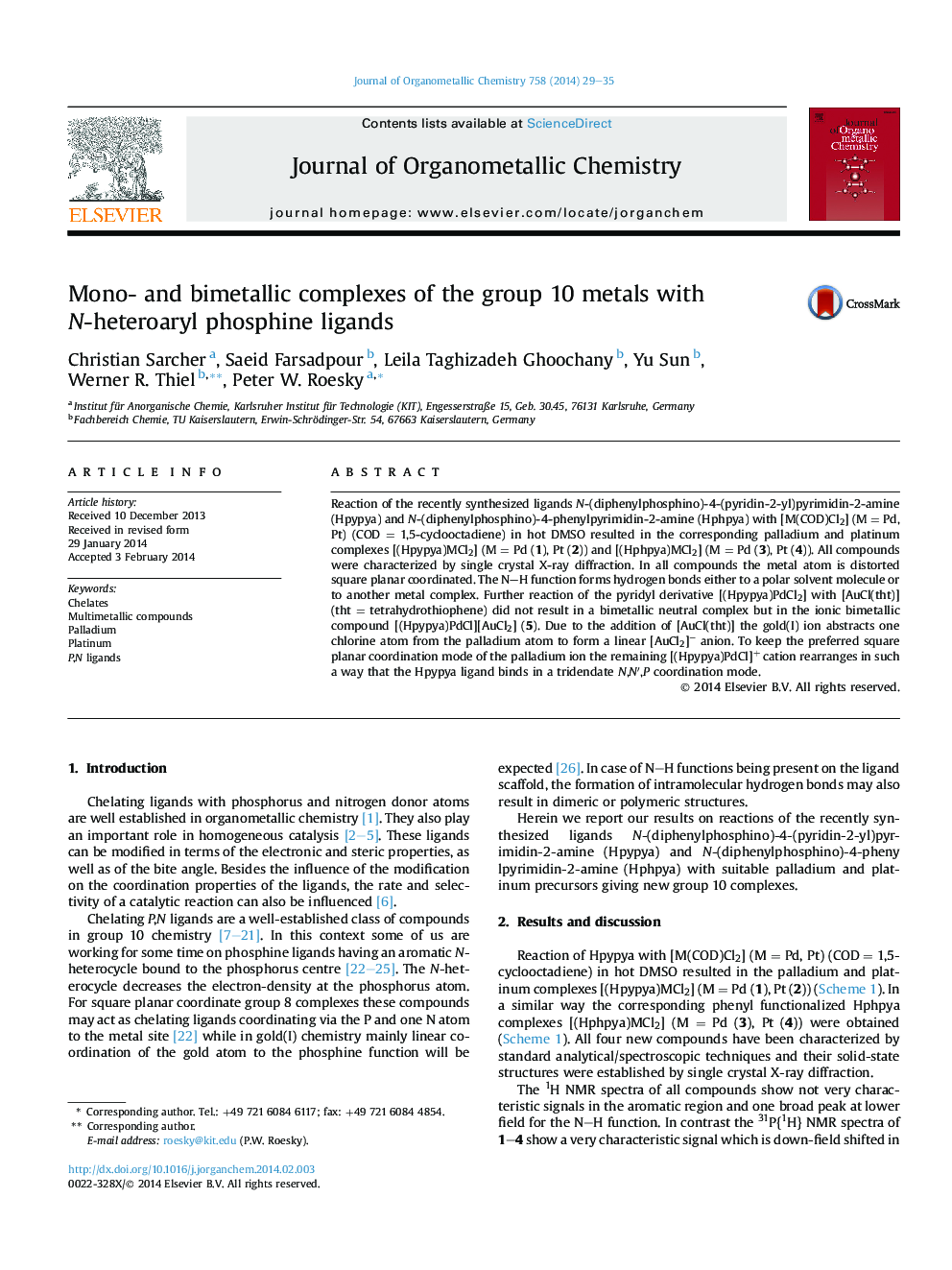| Article ID | Journal | Published Year | Pages | File Type |
|---|---|---|---|---|
| 1321148 | Journal of Organometallic Chemistry | 2014 | 7 Pages |
•Pd and Pt complexes with N-heteroaryl phosphine ligands were synthesized.•The N–H function of the N-heteroaryl phosphine ligands forms hydrogen bonds.•An ionic bimetallic compound [(Hpypya)PdCl][AuCl2] is reported.
Reaction of the recently synthesized ligands N-(diphenylphosphino)-4-(pyridin-2-yl)pyrimidin-2-amine (Hpypya) and N-(diphenylphosphino)-4-phenylpyrimidin-2-amine (Hphpya) with [M(COD)Cl2] (M = Pd, Pt) (COD = 1,5-cyclooctadiene) in hot DMSO resulted in the corresponding palladium and platinum complexes [(Hpypya)MCl2] (M = Pd (1), Pt (2)) and [(Hphpya)MCl2] (M = Pd (3), Pt (4)). All compounds were characterized by single crystal X-ray diffraction. In all compounds the metal atom is distorted square planar coordinated. The N–H function forms hydrogen bonds either to a polar solvent molecule or to another metal complex. Further reaction of the pyridyl derivative [(Hpypya)PdCl2] with [AuCl(tht)] (tht = tetrahydrothiophene) did not result in a bimetallic neutral complex but in the ionic bimetallic compound [(Hpypya)PdCl][AuCl2] (5). Due to the addition of [AuCl(tht)] the gold(I) ion abstracts one chlorine atom from the palladium atom to form a linear [AuCl2]− anion. To keep the preferred square planar coordination mode of the palladium ion the remaining [(Hpypya)PdCl]+ cation rearranges in such a way that the Hpypya ligand binds in a tridendate N,N′,P coordination mode.
Graphical abstractReaction of the recently synthesized ligands N-(diphenylphosphino)-4-(pyridin-2-yl)pyrimidin-2-amine (Hpypya) and N-(diphenylphosphino)-4-phenylpyrimidin-2-amine (Hphpya) with [M(COD)Cl2] (M = Pd, Pt) (COD = 1,5-cyclooctadiene) in hot DMSO resulted in the palladium and platinum complexes [(Hpypya)MCl2] (M = Pd, Pt) and [(Hphpya)MCl2] (M = Pd, Pt).Figure optionsDownload full-size imageDownload as PowerPoint slide
